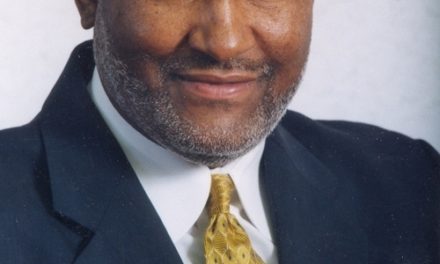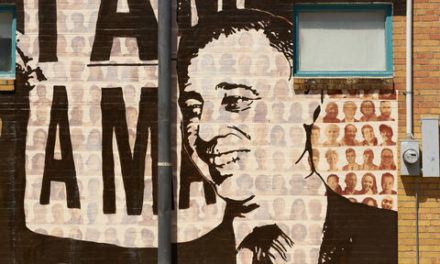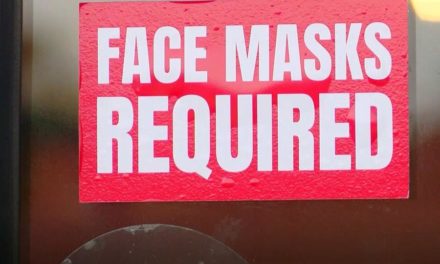From The Atlantic:
Is America in an irreversible decline? Four years ago, when I came home after a long stay in China, many people viewed China as unstoppable, while America seemed to be falling apart. Fortunately, what I heard from economists, historians, entrepreneurs, and others I interviewed at the time were hopeful signs that have now become more evident. Yes, the overall economy—jobs, housing, savings, security—had been knocked way down, but it was beginning a slow recovery. America’s worst economic challenge was not some flaw unique to declining empires but a pattern shared worldwide: the growing gulf between the rich and everyone else, and the concentration of benefits into too few hands. The real long-term worry for the country, they said, was not the then-frightening economy but the very structure of our national government, set up in the 1700s, which was more resistant to change than most other aspects of our national life and was making it hard to get the basic work of running a modern country done.
The good news, which my wife and I have been surprised by as we’ve traveled in smaller-town America these past few months, is that once you look away from the national level, the American style of self-government can seem practical-minded, nonideological, future-oriented, and capable of compromise. These are of course the very traits we seem to have lost in our national politics.
During the eras of Michael Bloomberg in New York, Thomas Menino in Boston, and Richard Daley and now Rahm Emanuel in Chicago, everyone has recognized the power of major-city mayors to announce big plans and to carry them out, for better or worse. Illustrations of the better, from my personal perspective: Bloomberg’s insistence that restaurant menus show calorie counts, Menino’s development of Boston’s waterfront and new industrial zones. Illustration of the worse: Daley’s midnight dispatch of bulldozers to destroy the runway at the lakefront Meigs Field in 2003, stranding airplanes that had landed and leaving the FAA to fume impotently about the loss of an airport the federal government had spent millions to help operate. But even with their excesses, our big-city mayors have been, like Mussolini, the people who could get things done, while presidents and legislators seem ever more pathetically hamstrung.
City-level success is of course no substitute for a functioning national government. Washington is where we set overall economic and tax policy; open or close our borders; negotiate for global standards on labor rights and the environment; decide on peace and war. Every bit of our American landscape shows the effect of crucial national undertakings, from the Northwest Ordinance to the National Park Service to the interstate highway network to the university research centers that run on grants from the National Institutes of Health and the Defense Department’s DARPA. When visiting each new small town, my wife and I usually start by seeing how many civic structures—parks, swimming pools, post offices, bridges—are relics of New Deal–era construction under the Works Progress Administration. They’re a bigger part of 21st-century urban infrastructure than you might guess.
But city-level success is better than city-level failure, and what we’ve seen recently is that this is not limited to the biggest cities with the most dominant (or richest) figures as mayors. “Being a mayor, especially in a ‘strong mayor’ city system, gives you tremendous opportunities,” I was told early this year by Don Ness, the mayor of Duluth, Minnesota. A hundred years ago, Duluth was one of the fastest-growing cities in America. Thirty years ago, it was, like Flint, Michigan, and Gary, Indiana, one of the most distressed. Now it has begun a tech, services, and tourism recovery. In the 2000 census, Duluth’s population was older than the state’s as a whole. Today it is getting younger and wealthier.
Ness was elected mayor in 2007, at age 33, and was reelected without opposition four years later, the first time that had happened in Duluth’s history. “It’s a job that requires—and allows—you to create and implement a tangible agenda,” he told me. “You can carry that out in a way that most positions in American politics just don’t permit.”
To see what that means and why it matters, consider some superficially very different cities whose stories have surprising points of resonance.
Greenville, South Carolina, and the Upstate
Every city has a cliché anecdote or slogan. By the sixth or seventh time you’ve heard it, you have a clearer idea not so much of the community’s reality but of what people believe that reality to be. For New York: “If you can make it there …” For Washington: “The most important city in the world.” For Austin, Burlington, Boulder, Seattle, Santa Monica: variations on “we’re so lucky to live here.” For Sioux Falls, South Dakota: “I grew up in a little farming town.”
After a few days in Greenville, South Carolina, we thought of its characteristic phrase as “Greenville? Are you kidding?” We heard it from many people, but here is the version told by Knox White, a 60-year-old lawyer who grew up in Greenville as part of an old local family and who, since 1995, has been its mayor. “I heard from the CEO of a company in Houston,” he told us. “It was transferring a division here, and one of their key talents said: ‘Greenville? Are you kidding?’ They wouldn’t come here—until they came here, kicking and screaming, and the next thing you know, they’d bought a house.”
We heard that story from a restaurant entrepreneur (plus several of his staffers), the founders of a start-up software firm, engineers originally from Germany and France, newspaper reporters, and on through a long list. Behind it is a conception of the town—people think we’re hicks, but we know we’ve developed something great—that depends on a series of specific achievements.
The best-known of those is the economic transformation of the part of inland South Carolina that abuts Georgia and North Carolina and is locally known as “the Upstate.” For much of the 20th century it was one of the world’s major textile-producing hubs. Greenville and its neighboring cities lie along the East Coast’s famous Fall Line, where the plateau stretching from the Appalachian Mountains meets the Atlantic coastal plain. This is also where rivers spill down from the mountains as rapids and waterfalls, and thus (as with their counterparts in New England) where the region’s first water-powered mills were set up. “Low country” Carolinians grew cotton and rice on their plantations, and “up country” merchants built water wheels to power their mills and made their area one of the South’s manufacturing centers.
For a century after the Civil War, up-country Carolina steadily grew as a textile center, built in part by mills that moved south from New England in search of cheaper labor. “Even in the early 1990s, textiles seemed to be a viable business employing tens of thousands of people,” says Steven Brandt, a Philadelphia-area native who took a job in Greenville in the late 1970s, liked it, and is now the publisher of the Gannett-owned daily The Greenville News. NAFTA took effect in 1994, and the World Trade Organization was created one year later. Both accelerated the inevitable move of textile mills to lower-cost sites in the Americas and Asia. Greenville County alone lost 6,000 textile-related jobs, and the state at least 50,000.
Overall, South Carolina is still poor, ranking 40th among the states in per capita income. But the Greenville region has had lower unemployment and faster growth, largely because of what it did to offset the loss of its dominant industry. Foreseeing the decline of the textile business before that had become a certainty, civic leaders worked with a business-promoting state government to convince big American and international companies that this was the next place to expand. General Electric opened a plant in Greenville in the 1960s and now makes gas turbines and other advanced products there. Michelin made its first Upstate investment in the 1970s and now has its North American headquarters near Greenville. Other auto-parts makers followed it, and in the early 1990s BMW announced that it would build a major auto-assembly plant midway between Greenville and neighboring Spartanburg.
When I asked what the story was behind these decisions, most people treated the question as if I were asking why the stock market was in New York. Where else would it be? The details include low wages and anti-union “right to work” laws in South Carolina; the belief of the governor at the time of the BMW decision, a Greenville native named Carroll A. Campbell Jr., that personal sales calls to recruit businesses from around the world were the most important use of his time; and the fact that Europeans had long done business in Greenville. During the textile mills’ heyday, much of the high-end equipment came from Europe, and international textile and fashion conventions in Greenville brought European business representatives there.
Business recruitment was a statewide effort. The more interesting, city-specific, and mayor-driven transformation was the one Greenville wrought on its then-decrepit downtown starting in the 1970s. I have learned that for people in the urban-planning world, noting that Greenville has a walkable and gracious downtown is like mentioning that Seattle has good coffee. Study groups come from cities around the world to analyze how Greenville has brought an assortment of restaurants, national and local retail outlets, high-end hotels, bars, theaters, in-town residences, public art, and riverfront pathways to what had been a boarded-up crime- and drug-ridden area. Presumably to spare themselves telling the story over and over, the mayor and a local writer, John Boyanoski, published a book last year whose title conveys the city’s view of its achievement. It is called Reimagining Greenville: Building the Best Downtown in America.
You can read the details there, including the decision in the 1970s to narrow the city’s main shopping street from four traffic lanes to two, so as to simultaneously discourage driving and encourage strolling on broadened sidewalks lined with rows of now-stately shade trees. Let’s concentrate on two intriguing political points.
One is that the downtown recovery effort was heavily guided by city officials—a series of mayors and a cadre of professionals in the city’s planning and economic-development agencies. The first of the influential modern mayors was Max Heller, who had fled Vienna after the Nazi takeover, found work in a shirt factory when he arrived in Greenville, and eventually owned a shirt-making company himself. As mayor starting in 1971, he led the effort to make the downtown more walkably European. He faced opposition from threadbare downtown merchants, who feared that making driving less convenient would push their remaining customers out toward the suburban malls. Now there is a heroic statue of him amid the bustle of Main Street. His latest successor, Knox White, overcame resistance in locating a baseball stadium for a Minor League team downtown, at the site of an eyesore, an abandoned lumberyard a few blocks from City Hall (“Even my wife thought that was crazy—where would people park?,” White says); in requiring the stadium developers to build adjoining condos as part of the project (“I told them, ‘This is how we do things’—and the condos sold like hotcakes!”); in working with the county to develop the Swamp Rabbit walking-and-biking trail, which now extends for 17 miles; and, most of all, in removing a concrete highway bridge that since the 1960s had blocked off the Reedy River waterfalls from the city that had grown up around them (“People kept saying, ‘It’s a perfectly good bridge! Why would you get rid of it?’ ”). Now Falls Park is the featured attraction of downtown, with the falls area ringed by clubs and restaurants and surmounted by an elegant 345-foot-long suspension bridge for pedestrians, from the same firm that designed Boston’s Leonard P. Zakim Bunker Hill Memorial Bridge.
An outsider looks at Greenville and sees a series of strong guiding hands, patiently applying a vision for their community from City Hall. People inside the town see something else. Upstate South Carolina is politically conservative, to put it mildly. Greenville County was the very last one in South Carolina (which was the very last state) to observe Martin Luther King’s birthday as a holiday. Mitt Romney beat Barack Obama by 10 points in South Carolina, and by 28 points in Greenville County (whose rural areas are even more conservative than the city). Bob Jones University is based in Greenville; Jim DeMint was the region’s congressman.
“Whatever happens here, it has to be about business,” Nancy Whitworth, the city’s director of economic development since the 1990s, told us. “This has always been a business-first town.” So how does such a town account for the record of its success? By ascribing it to the power of “public-private partnerships,” a term we heard many times each day. It was public-private partnerships that brought the big manufacturers to South Carolina, that made the downtown come alive, that are now supporting high-tech incubators in the city and science and engineering programs in the public schools.
There is a lesson in this for America. To wit: if we can find ways to name strategies so that they sound acceptable and soothe rather than raise hackles, we can get a surprising amount done. Had a politician labeled Greenville’s strategy “picking winners” or “industrial policy,” it would have been stillborn. As a series of public-private partnerships, it is a source of civic pride.
The two biggest cities in the Upstate are Greenville and, some 30 miles to the east, Spartanburg. They have roughly the relationship of Dallas and Fort Worth, or Minneapolis and St. Paul, with the larger, richer city of each pair—Greenville, in this case—unavoidably looking down on its neighbor, which in turn looks right back with pride in its scrappy authenticity. Midway between Greenville and Spartanburg is the tiny ex–textile town of Greer, which is the home of the BMW factory, the major commercial airport for the region, and the brand-new Inland Port, which offers shippers a streamlined, speedy rail connection to the ocean port 200 miles away in Charleston. Greer is also the closest attempt in the region to replicate the Greenville formula.
If you have seen the Greenville model, the parallels in Greer are evident. First the problem: the collapse of the textile business that had been the local mainstay. Then the response, via a public-private effort called the Partnership for Tomorrow: rebuild the downtown, which is tiny but has most of its original brick structures. “We’re very fortunate to still have good bones intact,” Rick Danner, who ran a landscape-design firm in Greer and now works for a local bank and has been Greer’s mayor since 2000, told me. “That’s been the foundation for our downtown-revitalization plans.” Create new parks and public spaces. Invest in infrastructure for the long run.
Apart from the Inland Port—a joint project between a railroad company and the South Carolina Ports Authority—the local airport, Greenville-Spartanburg International, is the most dramatic instance of a long-term public-private bet. When I first saw it from above, en route to the small airport in downtown Greenville, I assumed it must have once been a Strategic Air Command base, so enormous were its runway and surrounding buffer of open land. In fact it was a purely local undertaking, led by the Spartanburg textile magnate Roger Milliken, who decided in the late 1950s that the Upstate needed an airport that would never limit its potential growth. “They said, ‘Let’s not only build an airport, let’s build one that will be here for generations,’ ” Rick Danner said of the public-private airport commission, led by Milliken, that developed the airport. (Milliken was still active locally until 2010, when he died at age 95.) “They own 3,500 acres of land all around it for expansion, their land reaches right to the Inland Port, and they have a literal 50-year plan, updated continuously, for how they intend to grow.”
“The good news is that it was possible to do all this,” Steven Brandt, of The Greenville News, told us about the recovery process in Greenville, and by extension in Greer and other small towns like Travelers Rest and Duncan. “The bad news, for anyone trying to do it overnight, is that it required a purposeful and organic process for more than 30 years, with so many shoulders to the wheel.” When I heard that, I thought about a distant but surprisingly similar town.

The Socialist Mayor of Burlington, Vermont
In principle, you would compare Greenville and the Upstate with Burlington and northern Vermont only to highlight the unbridgeable chasms in American politics: one of the most right-leaning regions versus one of the most left-leaning. Vermont was the first state to pass legislation authorizing same-sex marriages, and is the only state with universal single-payer health coverage for its residents. South Carolina is likely to be among the last on both. While Barack Obama was getting 35 percent of the vote in Greenville County in 2012, he got more than 70 percent in Burlington’s Chittenden County. Burlington thinks of itself as a university town; Greenville, despite the presence of Bob Jones, does not. In South Carolina, the main threat to Republican candidates is a Tea Party challenge. In Vermont, the main threat to Democrats is from an independent. Vermont has a very active statewide organization called Vermont Businesses for Social Responsibility; seed capital came from the City of Burlington and Ben & Jerry’s. I saw no organization of a similar nature in South Carolina.
But if you looked at Burlington and Greenville as cities, for their amenities and feel and civic sense, and for the history of public-private interactions behind today’s cityscapes, you would find more similarities than you might expect. Today the waterfront is very important to the character of each town—the Reedy River and its waterfalls in Greenville’s case, Lake Champlain in Burlington’s. Thirty years ago, the cities were similar in that their waterfronts were off-putting rather than attractive: Greenville’s, because of the highway that made it hard for people to get to the river; Burlington’s, because of a railroad right-of-way that ran along the lake. The shopping, cultural, and recreational life of each city (and surrounding region) centers on its lively downtown. Greenville’s is called Main Street, Burlington’s is Church Street, but, with allowances for the difference in climate, you would have a hard time telling them apart. As with the waterfronts, these were deliberate public-private creations. Led by strong mayors, each city changed the physical look of the street, redid parking arrangements, commissioned public art, ran concerts and fairs, and took the lead in bringing new life to a battered downtown. Each city has a very popular Minor League baseball team (Greenville’s, for which the city built its new stadium modeled on Fenway Park, is a Red Sox affiliate called the Drive, after the local auto complex; Burlington’s, an A’s affiliate, is called the Vermont Reds). Greenville has a software and design start-up community with a critical mass of entrepreneurs who have chosen a smaller-town life. Burlington has a critical mass of entrepreneurs who have chosen the outdoor life and political tone of Vermont.
Today’s mayor of Burlington, Miro Weinberger, illustrates his city’s story much as Knox White, from a prominent old family, does Greenville’s. Weinberger’s parents, from Long Island, moved north during the Vietnam War “to opt out and find a different value system,” Weinberger told us. He is one of many 40-something children of that migration who have stayed in Vermont. “You’ll hear a lot about public-private partnerships,” he told us last fall, long before we went to Greenville. (For all the political differences between South Carolina and Vermont, the two mayors struck on this same phrase.) “This is a place where it’s really true.” In Vermont, these efforts—to teach nutrition and sustainability courses in the schools, to find work for some of the Burmese and Bhutanese refugees being resettled in the area, to foster tech start-ups—are often called “social responsibility” efforts, a term we didn’t hear in South Carolina.
The dominant political figure in Burlington’s modern history is Bernie Sanders—independent senator from Vermont since 2007, the state’s only House member before that, and, through the Reagan years, from 1981 to 1989, the embattled and effective mayor of Burlington. Running for mayor as an independent, Sanders beat a longtime Democratic incumbent by 10 votes. Through the next year, the Democratic-dominated city council tried to thwart every appointment, proposal, and piece of legislation Sanders put forward. “They thought my election was a fluke—they called it a fluke!,” Sanders told me last fall in Washington. “Their strategy was to prevent me from doing anything, so the people would realize their mistake and get rid of me next time. At the first city-council meeting, they fired my only appointee.” He drew the obvious comparison to the GOP’s strategy of hamstringing and waiting out Barack Obama.
The difference, as Sanders has not been shy in pointing out, is that he directly fought back, and overcame rather than compromised with his main opponents. His city attorney and the state attorney general sued the Central Vermont Railway for control of waterfront property then used for petroleum storage and a rail siding. They won, and now the land is the site of an aquarium and science center, bike paths, and other public facilities. “We put together a grass-roots coalition and made the city as open as we could,” Sanders told me. “Unions, workers, low-income people, women, environmentalists—that’s the kind of politics I believe in.”
Sanders pushed to create a “land trust,” a kind of permanent endowment for low-cost housing in the city. His economic-development agency concentrated not on recruiting big outside employers—maybe the clearest contrast with Greenville—but on “helping the small businesses we had grow.” Many have: Seventh Generation is a major supplier of natural and “green” cleaning and personal-care products; NRG sells wind-turbine instruments around the world; Burton is a leading snowboard and recreation company. Sanders started after-school programs that are now popular at all the city’s schools.
“He just turned that city around,” Chris Graff, a longtime Associated Press correspondent in Vermont and the author of a book on the state’s politics, Dateline Vermont, told me. “People will tell you, ‘What Burlington is, is because of Bernie,’ and they are right.” Melinda Moulton, who moved to Vermont in the early 1970s and has led waterfront reconstruction through the Main Street Landing company, which she co-founded with Lisa Steele, said, “He really is a socialist, and thinks that what is good about the city should be available to everyone.”
Sanders told me that his “major political achievement” came when he ran for reelection in 1983, after two years in office. Voter turnout doubled, and he won an easy victory: “People saw something happening in the city, and they wanted to be involved.” He eventually served four terms, in his last election defeating a candidate who was running with both Republican and Democratic support.
Sanders’s language differs from anything you are likely to hear from civic leaders in Greenville or Greer or Duluth. “These are political struggles, and you always have to put them in a political context,” he told me. “Struggle brings people together.” I imagine that the South Carolina mayors would choose compromise or collaboration to begin that sentence. But the sentence would end the same way. These are very different parts of America—different from one another, and from the big cities that, as part of the overall polarization of the country, are where many people feel they must go to be part of something exciting and have an effect. In Greenville and Greer and Burlington and elsewhere, struggle—or cooperation—brought people together, and made things work. The more you see of national politics in this era, the worse you’re likely to feel. The more we see of small cities, the better.





